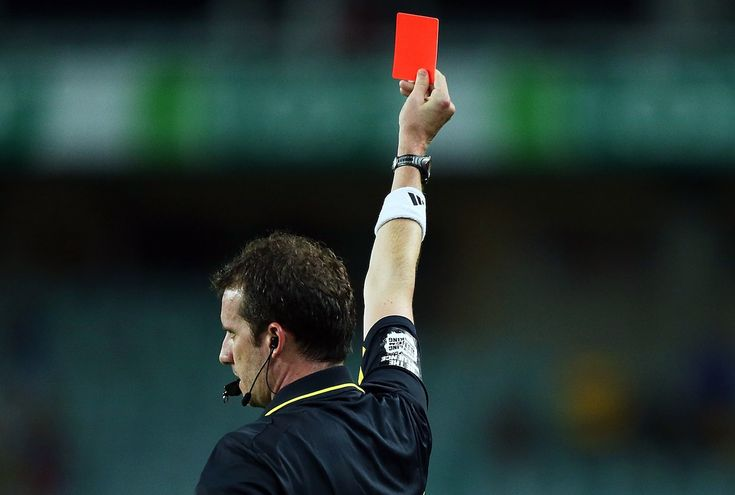What Is a Red Card in Football? Understanding the Rules and Impact

Football, also known as soccer, is a game of passion, strategy, and discipline. Among the many rules that govern the sport, the red card stands out as a critical element that can drastically alter the course of a match. But what is a red card in football, and why is it so significant?
- What Is a Red Card in Football?
- History of the Red Card
- When Is a Red Card Issued?
- Consequences of Receiving a Red Card
- Famous Red Card Incidents in Football
- How Referees Decide to Issue a Red Card
- How Teams Adjust After a Red Card
- Red Card vs. Yellow Card: Key Differences
- Can a Red Card Be Overturned?
- Conclusion: The Importance of Discipline in Football
What Is a Red Card in Football?
A red card is one of the most severe disciplinary actions a referee can take during a football match. When a player is shown a red card, they are immediately expelled from the game and cannot be replaced by a substitute, leaving their team to play with one fewer player.
Key Characteristics of a Red Card:
- Immediate Expulsion: The player must leave the field of play.
- No Replacement Allowed: The team must continue with ten players for the remainder of the match.
- Severe Offenses: Red cards are reserved for serious rule violations.
The red card’s symbolic meaning is clear: a line has been crossed, and the offending player’s actions are deemed unacceptable.
History of the Red Card
The red card system was introduced during the 1970 FIFA World Cup to standardize disciplinary actions. Before this, there was ambiguity in how referees communicated expulsions, leading to confusion among players, officials, and spectators.
Timeline of Development:
- Pre-1970: Verbal warnings and gestures were used.
- 1970: Red and yellow cards were introduced, designed by referee Ken Aston.
- Evolution: Over time, the rules surrounding red cards have been refined to ensure fairness and consistency.
When Is a Red Card Issued?
A referee can issue a red card for several reasons, all of which involve serious breaches of the rules. These actions include, but are not limited to:
Violent Conduct
- Physical aggression toward another player, official, or spectator.
Serious Foul Play
- Dangerous tackles or challenges that risk injury to others.
Spitting
- Spitting at anyone during the match is considered highly disrespectful and unsporting.
Denying a Goal-Scoring Opportunity
- Deliberately stopping a goal by illegal means, such as using hands outside the box or committing a foul.
Offensive Language or Gestures
- Using abusive, insulting, or threatening language or gestures toward anyone.
Receiving Two Yellow Cards
- Two cautions (yellow cards) in a single match automatically result in a red card.
Consequences of Receiving a Red Card
The impact of a red card goes beyond the immediate expulsion of the player. The consequences include:
Short-Term:
Long-Term:
Famous Red Card Incidents in Football
Some red card moments are etched in football history due to their dramatic or controversial nature. Here are a few notable examples:
- Zinedine Zidane (2006 FIFA World Cup Final): Zidane’s infamous headbutt on Marco Materazzi led to his expulsion and remains one of the most memorable red card incidents.
- David Beckham (1998 FIFA World Cup): Beckham received a red card for a retaliatory kick against Diego Simeone, significantly impacting England’s campaign.
How Referees Decide to Issue a Red Card
Referees are guided by the Laws of the Game, which outline clear criteria for issuing a red card. Factors influencing their decision include:
How Teams Adjust After a Red Card
Playing with ten players requires significant tactical adjustments. Common strategies include:
- Reorganizing the Defense: Prioritizing defensive solidity to compensate for the numerical disadvantage.
- Counterattacks: Adopting a counterattacking approach to exploit the opponent’s potential overcommitment.
- Substitutions: Bringing on fresh legs to cover more ground.
Red Card vs. Yellow Card: Key Differences
While both are disciplinary measures, the red and yellow cards serve different purposes:
FeatureRed CardYellow CardSeverityHighModerateAction TakenPlayer is expelled immediatelyPlayer receives a warningImpact on TeamPlays with fewer playersNo immediate impactFrequencyRareCommon
Can a Red Card Be Overturned?
In some cases, red cards can be appealed and overturned if evidence suggests the decision was incorrect. The process involves:
Conclusion: The Importance of Discipline in Football
The red card is more than just a disciplinary tool; it embodies the principles of fairness and respect that underpin football. Players, coaches, and fans must understand its significance to appreciate the balance it brings to the game. Maintaining discipline ensures that football remains a sport of integrity, passion, and sportsmanship.
Understanding what a red card in football is can enhance your appreciation of the game, its rules, and the strategic depth it entails. By upholding these principles, the beautiful game continues to inspire and unite millions worldwide.
